
![]()

![]()
CHIMBS: "Opening you the Doors to Antiquity & Culture"
The confluence of mobile communications and digital broadcast technologies is being realised by means of the EU funded project, CISMUNDUS (Convergence of IP-based Services for Mobile Users and Networks in DVB-T and UMTS Systems) has ushered the start of “a new Era” where rich services, such as European Cultural Heritage, can be disseminated to tourists, visitors and people on the move.
The CHIMBS (Cultural Heritage Interactive Multimedia Broadcast Services) research project endeavours to create cultural heritage related service scenarios in order to promote and disseminate Europe’s cultural heritage sites to people “on the move” employing the CISMUNDUS system architecture and application tools (DVB-T, UMTS/GPRS).
This is being achieved by means of providing a great number of cultural heritage visitors with an MPEG video of the archaeological site using the broadcasting channel and at the same time providing personalised content to single users through the telecom networks. The main programme, video is segmented so that each scene calls up related synchronised media, such as 3D reconstruction models, video clips, panoramas, Internet pages and many others. The user is able to access these media using a pen-tablet PC that he either owns or rents from the cultural institution he is visiting. The system involves two main scenarios: a) Programme Indexing (introduced above) and b) Location Based Indexing. The former one is similar to the Programme Indexing but the multimedia content that the user can access to is relevant to his/her location on the archaeological site area (location-based broadcasting).
The research project also investigates the cultural aspects involved in disseminating cultural heritage sites amongst the European and European Union (EU) citizens bearing in mind the multicultural and polyglot nature of Europe.
CHIMBS goal is the understanding the cultural heritage an archaeological site (re)presents, beyond a narrow national perspective but also in a European one, providing a harmonic mode of balancing between the polymorphism of EU citizens’ cultural traditions and a common European cultural unity, through the presentation and dissemination of Europe’s cultural heritage sites strengthening the elimination of prejudice between people.
To achieve the above, CHIMBS makes use of user-profiling to determine the most appropriate user interface and media content that corresponds to the cultural heritage site visitor’s cultural and Linguistic background, visitor’s age (Children, Teenagers/Adults and Family group), purpose of visit (Common/Casual Visitor, Intentional Visitor and Specialist), cultural (country of origin) and linguistic background, (all 15 EU countries and 11 EU official languages). Furthermore, the user interface can be described as Graphical (GUI) with wide use of metaphors. As far as the design process is concerned, a productive combination of User-Centred design (as a means of testing and evaluating the multimedia design product) and Task-Oriented model (for designing the UI and profiling users) is being followed.
Importance is also given to the commercial aspects of such project, incorporating modes and ideas of reinforcing E-commerce for cultural heritage (online souvenirs, purchase of historically related products, e.g. books, DVD etc.) as well as raising cultural institutions’ revenues and attracting other non-cultural organisations (advertising, tourism, broadcasting, content providers, etc.).
To demonstrate the potential advantages and feasibility of such project the archaeological site of Sagalassos in Turkey (also used as a test-bed by the 3D Murale Project ) and the internationally renowned archaeological site of Olympia in Greece are being used as test cases. In light of the above, the project's usefulness can extend beyond archaeological sites and museums to also accomodate larger cultural heritage sites, such as the next European Capital of Culture (City of Graz in Austria). Apart from people on the move, the CHIMBS project could be used in hotspots, such as international airports and train stations to promote and disseminate cultural heritage sites to the passengers travelling to various destinations.
Finally, the overall performance and success of the service scenarios and project on the whole will be evaluated by a user panel through observations and user trials.


Screenshot 01: CHIMBS User Profiling System.
Screenshot 02: Profiling users for a)Age Group, b)Purpose of Visit, c)Cultural Background/Origin and d)Language/Mother Tongue.

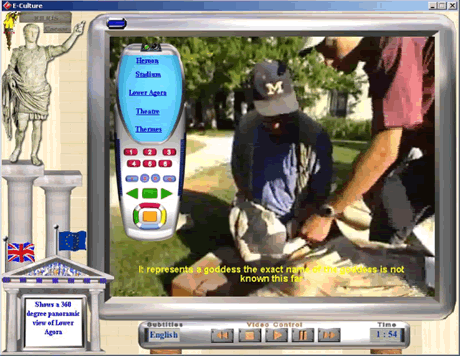
Screenshot 03: Adult’s User Interface (Start: Sagalassos Location).
Screenshot 04: Main Video with Subtitles. (User Interface adoption of the TV metaphor).

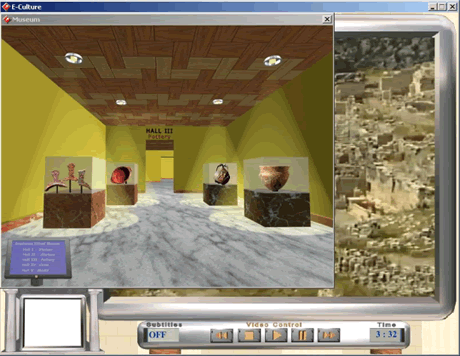
Screenshot 05: Main Video with 3D Panorama Image.
Screenshot 06: Main Video with Sagalassos Virtual Museum (Displaying Exhibits found in the archaeological site).
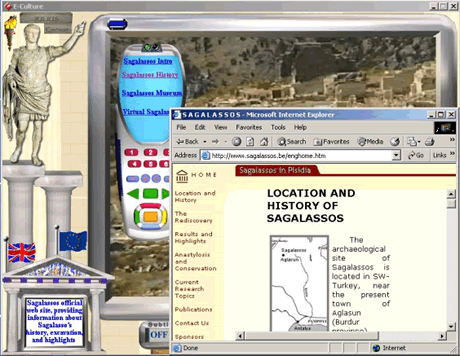

Screenshot 07: Main Video with Relevant Online/Internet Content (Sagalassos WWW page).
Screenshot 08: Main Video with 3D “walk-through” Video of reconstructed Sagalassos.

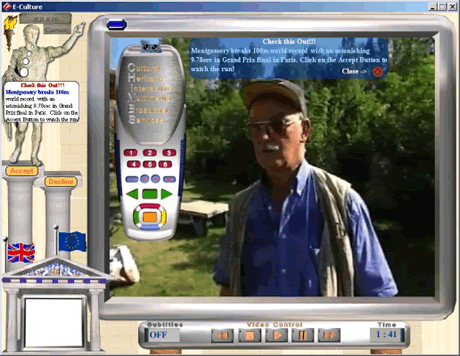
Screenshot 09: Online Shopping of books relevant to the programme’s content (Amazon E-bookshop).
Screenshot 10: E-commerce: Prompting users to watch a sport’s video clip (pay-per-view).
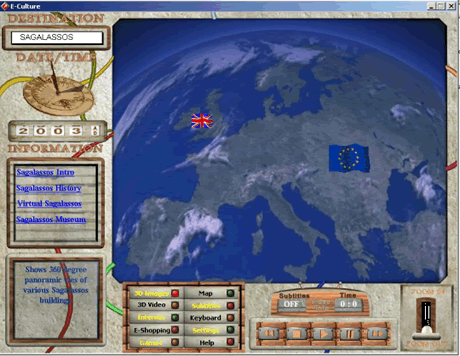
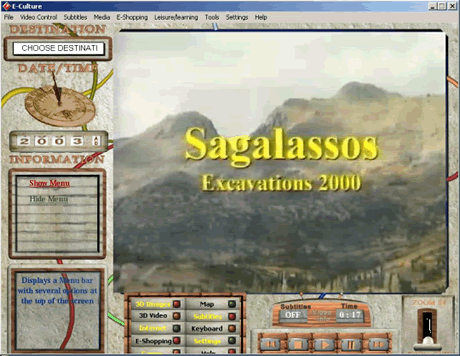
Screenshot 11: Children’s User Interface (Time-Machine metaphor).
Screenshot 12: Children’s User Interface with editable (hide/show) Menu Bar.
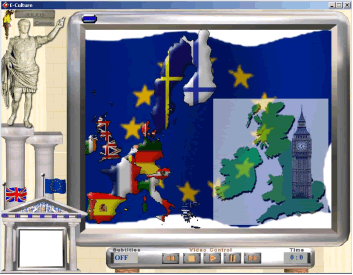
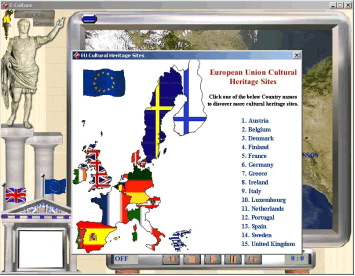
Screenshot 13: Promoting European Union’s Cultural Heritage Sites.
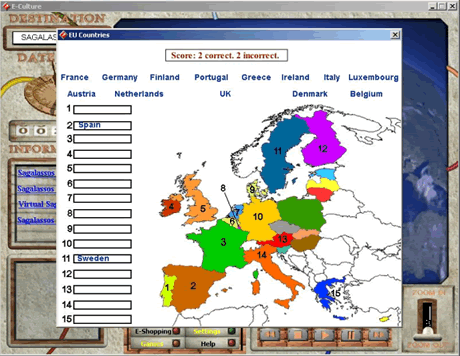
Screenshot 14: Children (drag & drop) game to assist in better knowledge/understanding of the EU members and Culture.
For more information please contact Prof. John Cosmas or Emmanuel Tsekleves.